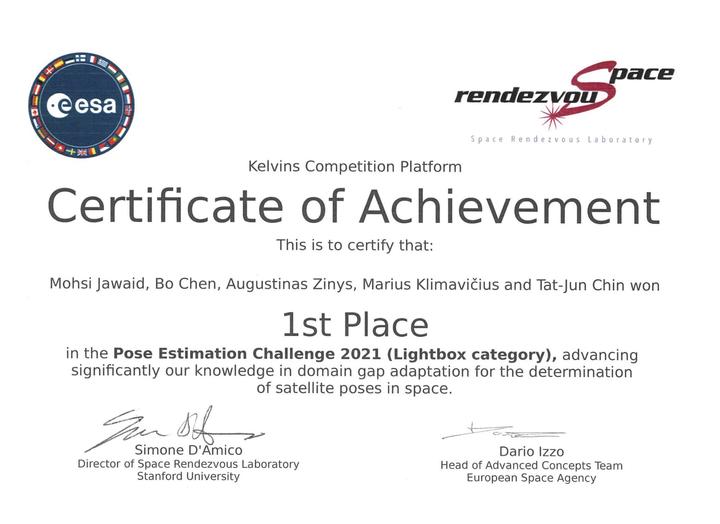
Abstract
This article concerns the second Satellite Pose Estimation Competition (SPEC2021), an international competition designed to address the challenging problem of domain gap in developing spaceborne computer vision algorithms. Due to the lack of representative spaceborne images of the target object at the development stage, most algorithms are typically developed and trained on computer-generated synthetic images of the target, which causes the algorithm to overfit the features specific to the synthetic imagery. In order to promote new ideas to tackle this important problem and benchmark the robustness of different algorithms across domain gaps, SPEC2021 utilizes the next-generation spacecraft pose estimation dataset comprising images from labeled images from computer graphics and real-life sources. This article covers the dataset and competition design and analyzes the results of the competition which received submissions from 36 participating teams. Specifically, through the solutions developed by the two winning teams, this article sheds light on key components that can contribute to successfully bridging the domain gap in spaceborne computer vision applications.